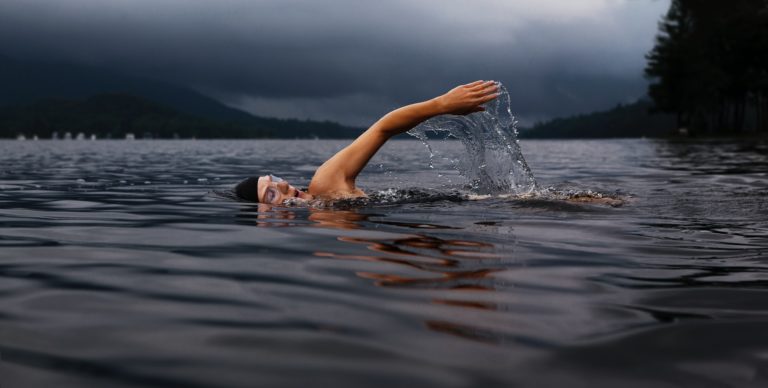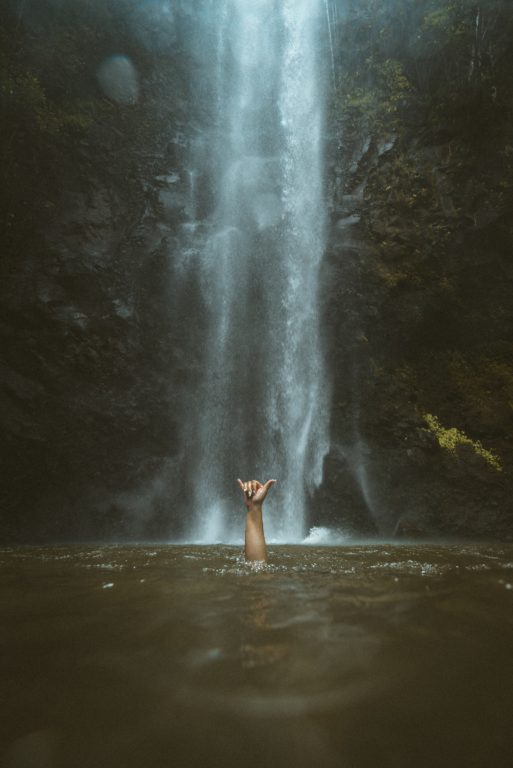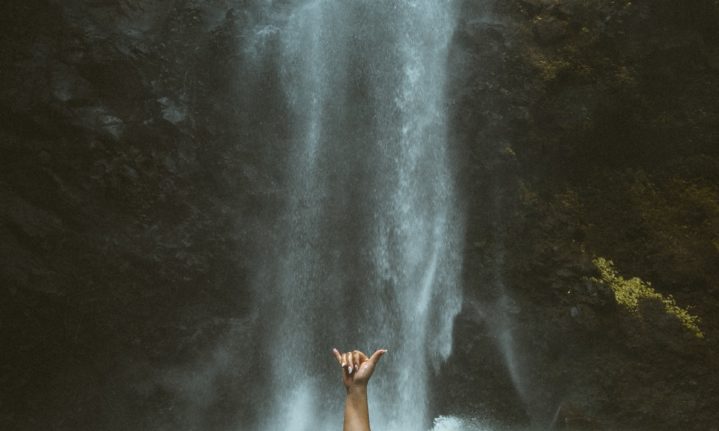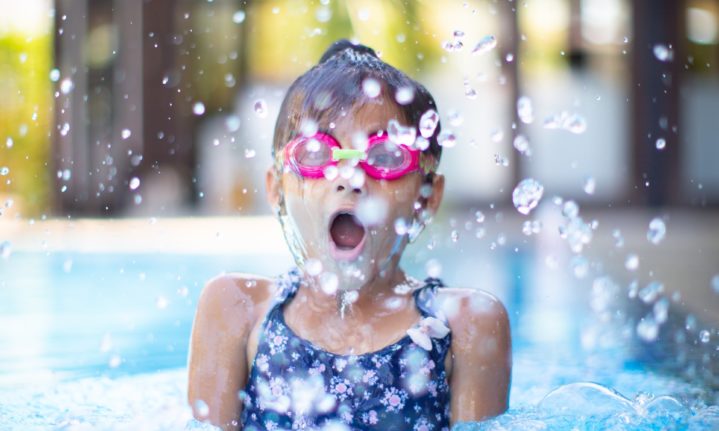Swimming in cold, open water has become a popular hobby for thrill-seekers. From the frigid waters of Cape Town’s Atlantic seaboard to the icy dams of the Karoo, South Africa offers many opportunities for a refreshing dip.
By Sam van Heerden

Picture: Unsplash
But cold water should also be approached with caution. Whether just going for a dip or open water swimming in the deep, immersing yourself in icy temperatures can be dangerous, especially in winter.
‘Cold water should be respected, not conquered,’ explains the founder and Chair of the International Ice Swimming Association (IISA), Ram Barkai. Barkai found his passion for cold water in the frigid oceans of Cape Town and has swum in some of the coldest parts of the world including Antarctica and the Arctic.

Ram Barkai in action. Picture: Supplied
‘We are warm-blooded mammals. Our normal core body temperature is around 37C, and it needs to stay there for our body to function correctly,’ says Barkai. Although few things beat the thrill and aliveness that comes from immersing yourself in cold water, it is important to understand what the cold does to your body and brain.
‘Cape Town’s water, at between 12-14C, is considered cold and a prolonged immersion or swim can be dangerous,’ he explains. ‘When things go wrong in the cold water, it happens quickly, and it is very useful to know what to do. However, it can be done for a prolonged time if one trains and monitors the safety. A healthy respect and understanding may save one’s life.’
Safely swimming in cold waters takes some planning and knowledge, but Barkai gives some great tips to keep in mind when considering an icy dip.
1. Don’t Go Alone

Picture: Unsplash
‘I always recommend that you find someone to do it with. Never go alone,’ he suggests, ‘It’s important to have someone to help you if you are struggling, and everyone struggles in the cold sometimes.’
Although it might be tempting to go solo, it is safer to find a partner or group to join. Find some experienced and responsible people who can share in both the challenges and joys of cold water immersion.
There are groups that swim daily or on weekends in both Cape Town and Durban, and you can find these groups on the Cape Town Long Distance Swimming Association website.
If you go with a friend, Barkai recommends that you watch over each other closely to make sure no one slips into trouble without anyone noticing.
2. Take It Slow and Set Limits
Although this may be natural after the icy waters first touch your feet, it is important to go slowly. Take the swim or dip step by step. ‘It takes a while to understand how the cold affects you mentally and physically,’ Barkai explain., ‘Study them both. Don’t be scared, but don’t rush it.’
Once your body adjusts to the water temperature and you become more comfortable, it may be tempting to stay in. But you need to know your limits: ‘Make sure you stay in the water for the period you know you can handle. In Cape Town waters, 20 minutes is a good limit for dipping/sitting.’
3. Focus on Your Breathing

Picture: Unsplash
Have you ever stepped into the cold ocean and had your breath literally taken away? This is your body going into cold water shock. But it won’t last long: Take some deep and controlled breaths to avoid panic and regulate your breathing.
The initial effects of cold water pass in less than a minute, so be patient. If you are embarking on a lengthier swim, don’t zoom away off the bat and instead wait to acclimatise. ‘It is important to control your breathing and to make sure it is efficient. Inefficient breathing uses a lot of energy,’ Barkai explains.
4. Keep Your Body Moving
The cold water might shock you into staying still. But you should try to generate some heat: Attempt to move around, even if you are only going for a dip. Swimming gently can help your body acclimatize to the water by maintaining your core temperature and avoiding dangerous heat loss.
Barkai also suggests that you make sure you are warm before you enter the water. This is especially important in winter when the elements are against you. Don’t take your clothes off too soon, and try a light walk before you get in. This will get the blood flowing around your body and will increase your heart rate slowly, which will minimize the shock you experience when you take your first brave steps into the frigid waters.
5. Keeping Head Above Water
It is not uncommon to see cold water swimmers in icy parts of the world keeping their heads out of the water. They may even wear a beanie when taking a dip.
This may seem strange, but there is a good reason for it: A fair amount of body heat is lost through the head due to increased blood flow in these regions, and this heat loss might make a difference to your core temperature.
While swimmers might want the thrill of frosty immersion, keeping your head out of the water can prevent your body temperature from dropping to uncomfortable and dangerous levels. Plus, a colourful beanie adds to the fun!
6. Get Into Warm Clothes Post-Swim
Although the post-swim rush can feel amazing, this can soon give way to shivering, slight disorientation, and coldness if outside temperatures are low. To avoid potential symptoms of mild hypothermia, Barkai suggests: ‘Have extra-warm clothes ready for after the swim. Get wet gear off and get dry and into clothes as soon as possible.’
The thrill and disorientation might kick in quickly, so it’s also important that your clothes are easy to access and don’t require your numbed fingers to do too much fumbling and fiddling. Dry robes and ponchos can be a good solution for this: They combine an easy-to-put-on robe-style with a weather-resistant outer layer and a warm, dry inner layer. They are great for some quick post-cold relief while you gather your warm clothes.
7. Get to a Warm Place
If those winter winds are blowing and the weather is cool, make sure you get to a cosy spot where you can thaw off the cold. ‘Wind on a cold body acts like an air-conditioner,’ explains Barkai. When you get out of the cold water, your body temperature continues to drop, so it’s important to heat up. Whether it is in your car with the heater going, a seaside café with fellow swimmers, or a sunny corner, make sure you move away from the cold outside elements.
8. Exercise Gently

Picture: Unsplash
You might feel a bit stiff after your swim. Walking around or doing some gentle movement after you’re dressed can help to get blood flowing and warm you up. But remember that your body is still considerably cold, so intense exercise isn’t recommended until your body’s temperature has increased. ‘Don’t [immediately] run around or exercise intensely,’ says Barkai, ‘The body needs time to warm up inside. It’s a process you can’t shortcut or you may cause yourself damage.’
9. Avoid Taking a Hot Shower Immediately Afterwards
If the shivers hit, it may be tempting to hop into a hot shower immediately to warm up, but Barkai warns against this. It can cause low blood pressure and fainting known as ‘rewarming shock’. Instead, wait until your core temperature has increased a bit using the other methods mentioned above.
Having a dip in cold water can be invigorating and beneficial to both your mind and body. But as Barkai emphasises, it is important to understand the science behind it and the associated risks, not just the perceived benefits. So, the next time you venture out for a swim in icy temperatures, do your research and approach the cold water responsibly.
As with any thrill-seeking activity, respecting both the limits of your body and the power of nature will go a long way, and it may just save your life.
10. Bring Along a Snack and a Warm (Rather than Hot) Drink

Picture: Unsplash
Nothing is better than a cup of hot chocolate after a cold-water swim. Bring along a warm drink in a flask or get a takeaway nearby, as this will help warm you up from the inside. You can also bring along some extra warm water and a bucket or tray to help thaw your poor extremities like your hands and feet.
But don’t drink something that is piping hot too quickly, according to Barkai: ‘Hot drinks should come when you are not at hypothermia risk. Don’t rush them.’
Add a sweet snack to the mix and you’ve got yourself a post-swim tea party. In addition to increasing your happy hormones which should already be thriving post-swim, something sweet to eat can also help your blood circulation and warm you up.
ALSO READ
























